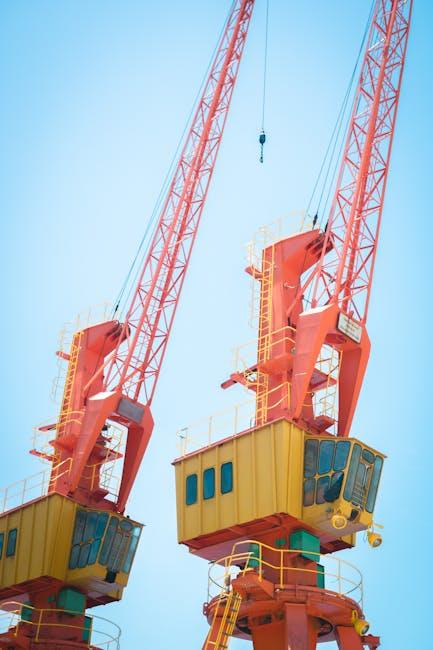In the ever-evolving world of cinema, innovation is the heartbeat that drives filmmakers to explore new frontiers. Among the myriad advancements, high frame rate (HFR) films have emerged as both a marvel and a mystery. As directors push the boundaries of visual storytelling, audiences are left to ponder: are these ultra-smooth, hyper-realistic experiences a necessary evolution in filmmaking, or merely a dazzling gimmick? This article delves into the intricate dance between artistry and technology, exploring whether high frame rate films are reshaping our cinematic landscape or simply offering a fleeting spectacle.
Exploring the Science Behind Frame Rates
Frame rates, measured in frames per second (fps), are a critical element in the cinematic experience. They determine how smoothly motion is portrayed on screen. Standard frame rates like 24 fps have long been the industry norm, offering a familiar and somewhat nostalgic viewing experience. However, high frame rate (HFR) films, which range from 48 fps to even 120 fps, claim to deliver unparalleled clarity and fluidity. These higher rates aim to reduce motion blur, providing a hyper-realistic visual that can make scenes feel more immersive.
- Visual Clarity: HFR can make fast-paced action scenes more coherent, reducing the blur and judder often seen in lower frame rates.
- Realism: The increased detail might enhance the realism of a film, although some argue it detracts from the traditional cinematic feel.
- Viewer Experience: Opinions vary widely; some viewers find HFR more engaging, while others feel it creates a “soap opera” effect, making films look overly smooth and unnatural.
The debate over whether HFR is a necessary innovation or simply a cinematic gimmick continues. While it promises a new level of visual fidelity, its reception largely depends on the viewer’s personal preference and the context in which it is used.

Artistic Intentions Versus Technological Innovations
In the realm of cinema, the dance between artistic intentions and technological innovations often sparks intense debate. High frame rate (HFR) films, with their promise of unprecedented clarity and smoothness, challenge the traditional storytelling paradigms. For some filmmakers, HFR offers a canvas to craft hyper-realistic worlds that captivate audiences in a novel way. It allows for intricate details to emerge, enhancing the visual narrative and potentially transforming the viewer’s experience.
However, there are concerns that such technological leaps might overshadow the essence of storytelling. Critics argue that the hyper-realism of HFR can sometimes strip away the dreamlike quality that makes cinema magical. Considerations include:
- Emotional Engagement: Does the clarity enhance or detract from emotional immersion?
- Aesthetic Consistency: How do these innovations align with the director’s vision?
- Audience Reception: Are viewers ready to embrace this shift, or do they prefer the familiar warmth of traditional frame rates?
Balancing these elements requires a delicate touch, as filmmakers strive to honor their artistic vision while navigating the ever-evolving landscape of technology.
Audience Perception and Experience
The reception of high frame rate (HFR) films varies widely among audiences. For some, the increased clarity and fluidity create a more immersive experience, enhancing the realism of action sequences and expansive landscapes. HFR technology can bring a sense of immediacy, making viewers feel as if they are part of the scene rather than passive observers. However, this same realism can sometimes be jarring, especially for those accustomed to the traditional 24 frames per second.
- Enhanced Realism: Some audiences appreciate the vividness and sharpness.
- Uncanny Valley: Others find the hyper-realism unsettling.
- Cinematic Tradition: Traditionalists may prefer the classic film aesthetic.
- Genre Impact: Certain genres, like action or sci-fi, may benefit more from HFR.
Ultimately, the impact of HFR on viewer experience is subjective, heavily influenced by individual preferences and the context in which the film is watched. As the industry experiments with this technology, it will be intriguing to see how audience perceptions evolve.

Guidelines for Filmmakers: When to Embrace High Frame Rates
High frame rates (HFR) can offer a unique viewing experience, but knowing when to use them is key to enhancing rather than distracting from your film. Consider embracing HFR in situations where visual clarity and smooth motion are paramount. For instance, action-packed sequences can benefit from HFR, allowing viewers to catch every detail of fast-paced scenes. Similarly, nature documentaries often utilize HFR to capture the intricate beauty of wildlife with stunning realism.
- Immersive Experiences: Use HFR for virtual reality content where smoothness enhances immersion.
- Live Broadcasts: Sporting events and concerts can feel more immediate and engaging.
- Experimental Films: If your project pushes the boundaries of traditional storytelling, HFR might add a fresh layer of innovation.
However, it’s essential to assess whether the aesthetic quality aligns with your narrative goals. Some genres, like drama or horror, may lose their intended mood with too much clarity, potentially breaking the audience’s suspension of disbelief. Carefully weigh the artistic intent against the technical benefits before deciding to implement high frame rates.

